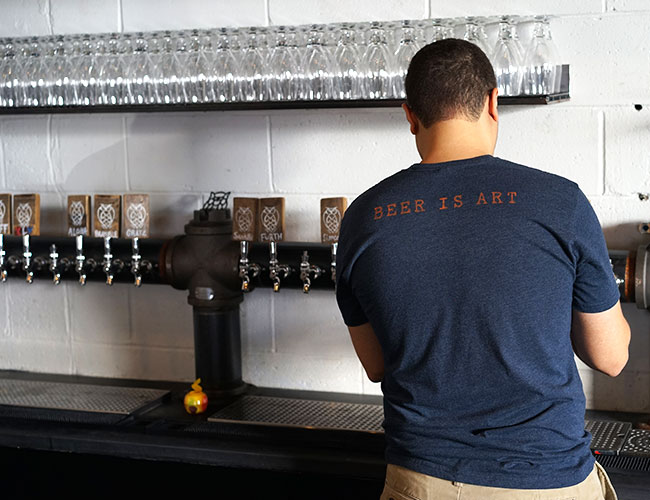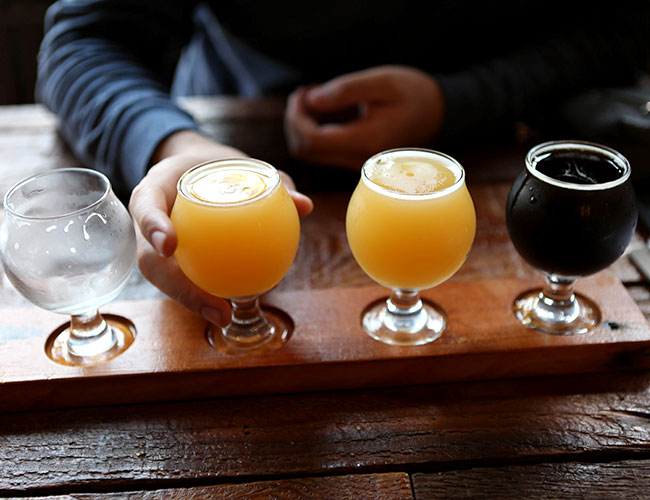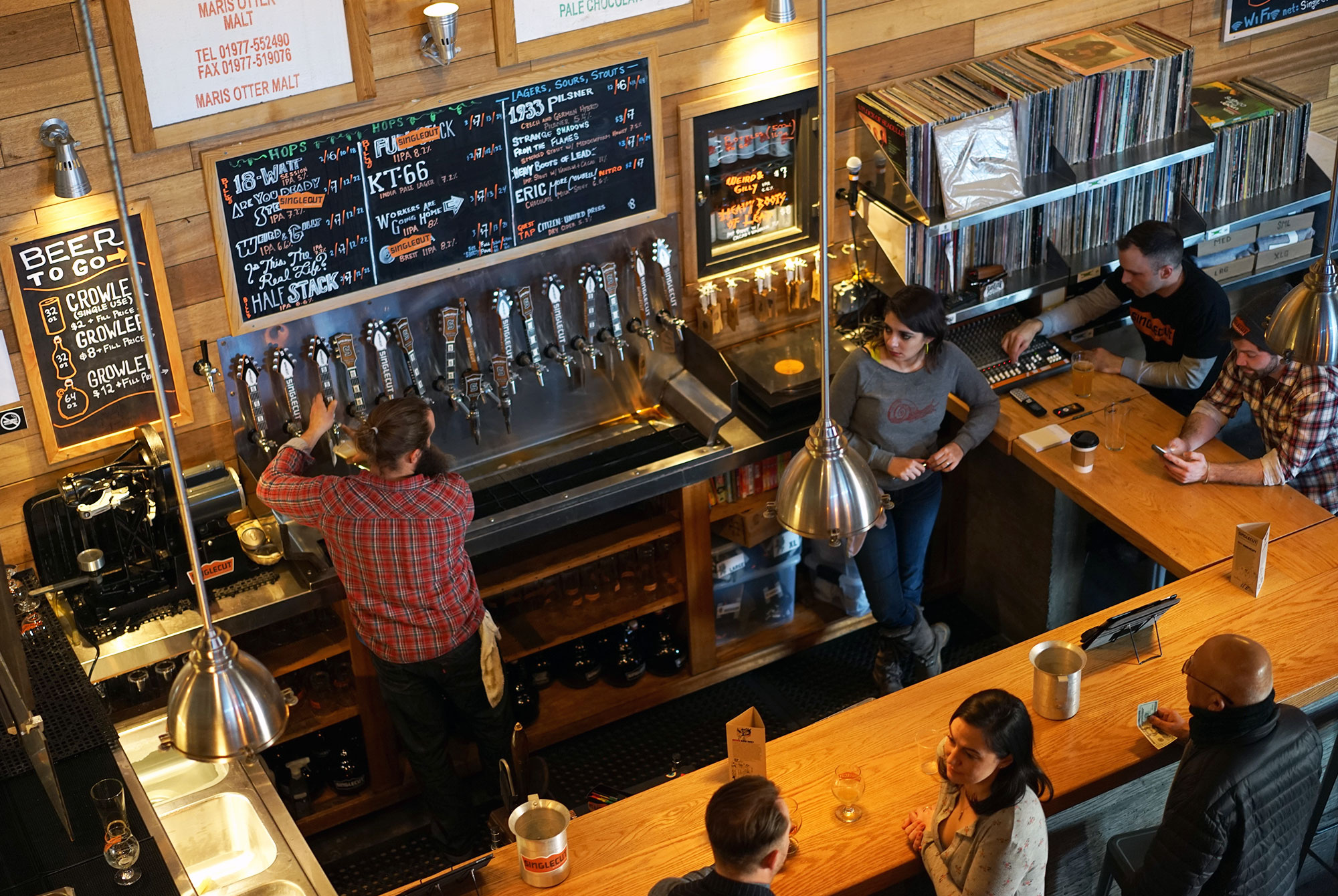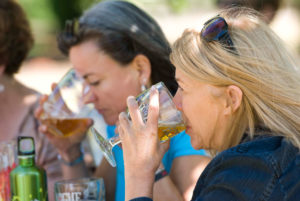Shop
Are Taprooms the New Dive Bars?
As the dive bar goes extinct, the brewery taproom thrives.
City-dwelling millennials don’t know what a dive bar is. Not a real one at least, with shitty linoleum floors and shittier drinks, the waft of stale beer clinging to the walls like a badge of honor. Which is sad, in a way. But all hope isn’t lost. Because the brewery taproom is our generation’s dive bar.
As city’s gentrify and rent prices climb, the cost of doing business has become too high for beloved dive bars across the country. Three-dollar shot-and-beer combos with a dirt-cheap plate of wings just isn’t going to pay the bills anymore.
“The trendy young professional millennials who overwhelmingly desire to live in cities and most likely to reside in urban neighborhoods once clogged with dive bars are quite different than the regulars of old racking up monthly tabs of Olde Style, Pabst, or ‘Gansett tall-boy cans,” Time wrote last year. “The new locals prefer craft cocktails, IPAs, smoothies, and lattes instead.”
From LA to San Francisco, New York to Miami, Chicago to Boston, dive bars are dying.
From LA to San Francisco, New York to Miami, Chicago to Boston, dive bars are dying, leaving in their wake trendy facsimiles peddling ten-dollar craft beers or, more often than not, upscale condo buildings catering to a population that had never before been to that address.
“Boston, like a lot of major cities where real estate prices have rocketed to insane levels, has seen the extinction of the dive bar come to fruition in earnest,” Luke O’Neil, who wrote a book on the subject, tells me. “It’s not a unique problem here, but for a city so often synonymous with the idea of the dive bar — just look at the glut of gritty Boston movies that continue to come out — you can’t help but see their passing as the city losing a big piece of its culture and character.”
Between May of 2011 and February of last year, 29 of the 89 Boston dive bars O’Neil covered in his book, Boston’s Best Dive Bars, had closed for good. Boston is experiencing a building boom unlike any time in modern memory, but it’s certainly not alone in the impact urban development is having on its closely guarded drinking culture.
I love a good dive bar. And while it might be time to pour one out for the worst drinking hole on your block, save a few for later. Taprooms are our next great salvation.
Walk into your closest craft brewery taproom (which, at this point in history, is probably pretty damn close) and you’re sure to find a few staple features. The floor will be industrial-chic (think cement or hard-wood), the bar big and inviting. Classic arcade games, shuffleboard, darts, and a stack of board games or the like will litter one corner. A food truck or two will be parked outside. The vibe will feel comfortable, homey without a lot of bells and whistles.
Walk in a few more times and you’ll start recognizing people. Soon the bartenders, a cheery, knowledgeable lot bedecked in beards and tattoos and beanies, will start recognizing you too. Without so much as a word exchanged, your perfectly poured juicy IPA will be waiting for you at the bar, served at the proper temperature in a glass designed to enhance its intoxicating aroma.
At face value, dive bars and taprooms are nothing alike: the former a cherished and cheap cultural backbone lost to time, the latter the physical manifestation of an industry asking $22 for 64 ounces of beer. (And getting it.)
The dive bar you’re likely picturing right now is a grimy, disreputable place, prone to the occasional bar fight, sassy bartender, and draft lines that haven’t been cleaned since, well, ever.
The dive bar you’re likely picturing right now is a grimy, disreputable place, prone to the occasional bar fight, sassy bartender, and draft lines that haven’t been cleaned since, well, ever. But it’s also a casual environment frequented by regulars, an outlet after a long day of work where familiar, friendly faces await, and you can leave satiated — whatever that might mean for you — without breaking the bank. It’s the beer fridge your small apartment can’t support; your suds-supplying home away from home.
That’s what a taproom is to me.
As dive bars shutter, the options available become increasingly more homogeneous. There are the faux-dive bars, the bars with all the hallmarks of their predecessors — neon beer signs, crappy popcorn machines, Miller Lite specials — but none of the history or charm. And then there’s the new wave of craft bars — “mega-sized bland normie bars,” O’Neil calls them — that feature upscale food menus, tap lists littered with local favorites, and cocktails seemingly cut from a magazine, with the price tag to match.
Somewhere in the middle is the humble brewery taproom. Without a doubt, you won’t be met there with dive bar prices and a bartender named Flo telling you the meatloaf is awful. But it’s the cheapest you’ll find that beer anywhere, poured fresh from the source to boot. The more you go, the more you’ll want to go back.

The taproom at Night Shift Brewing in Chelsea, MA.
“It’s usually an objectively bad bar in terms of service, product, and décor, but it’s also the best bar you know,” O’Neil writes about dive bars. “It’s a place where you might recognize all the regulars, but one where you can…blend into the scenery.” Sound familiar?
If the taproom is all the good parts of that but with great beer served by the people who actually made it onsite, is that really so bad?
Nothing will ever replace the dive bar. If there’s one you love, go there often. Drink cheap beer, play darts and bump “More than a Feeling” on the jukebox on repeat. It’s a feeling you might not have forever, and one the younger generation of bar-lovers might never know.
But don’t sleep on the taproom, either.
Where there was once the beer-and-shot deal, now there’s the flight. The bartenders probably won’t give you shit, but they will give you a great beer suggestion to go with that grilled cheese. You can even play foosball on a table that’s not warped from years of beer spills gone uncleaned.

Where there was once the beer-and-shot deal, now there’s the flight. Photo by Kenny Gould.
But more than all that, taprooms are becoming the new neighborhood bar, filled with people you know, or will know soon, pulling up a stool for the same reason you are: Sometimes you want to see familiar people — without being seen at a bar — and drink beers you’re happy to pay a little more for.
And that’s okay.


